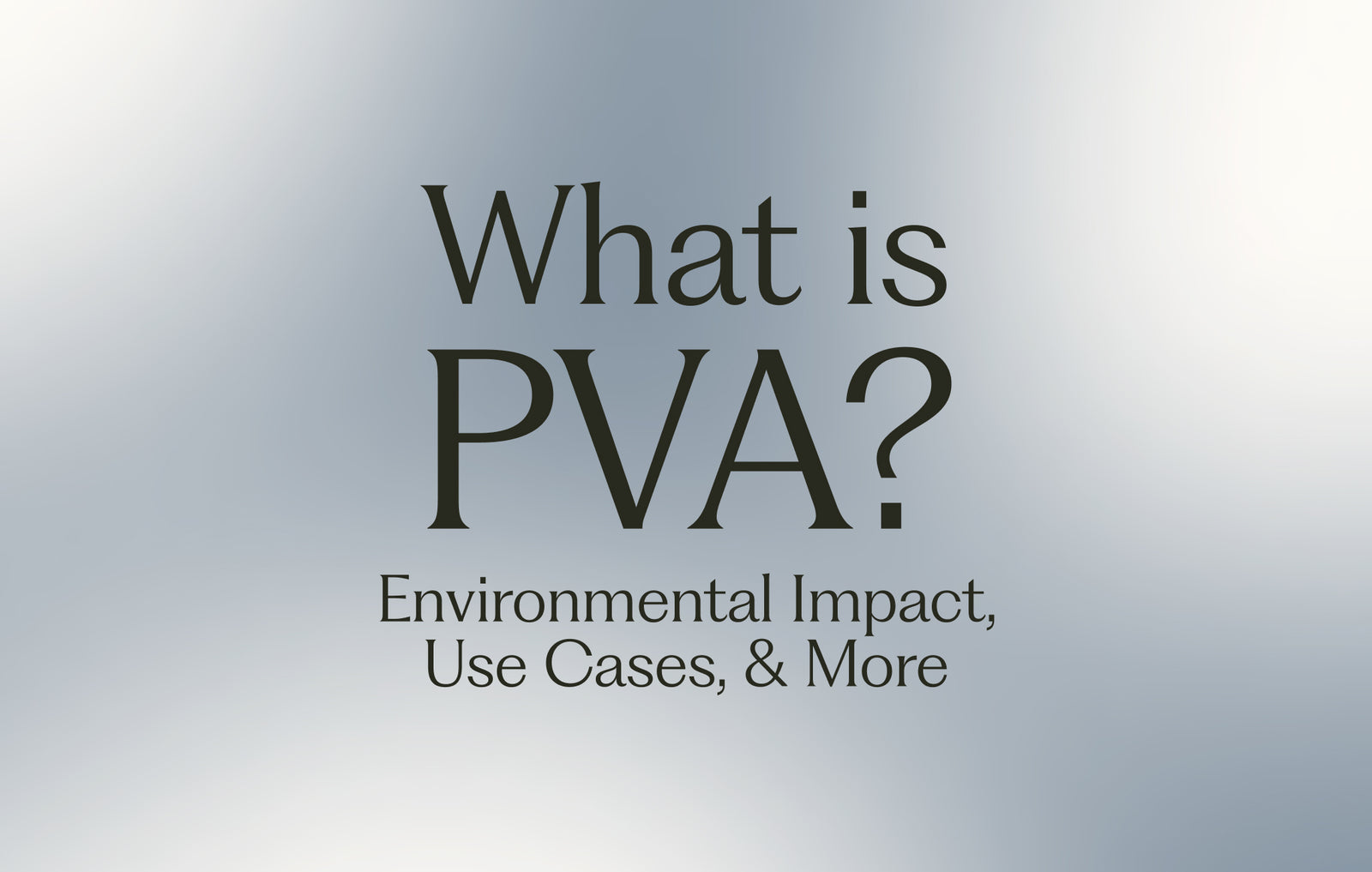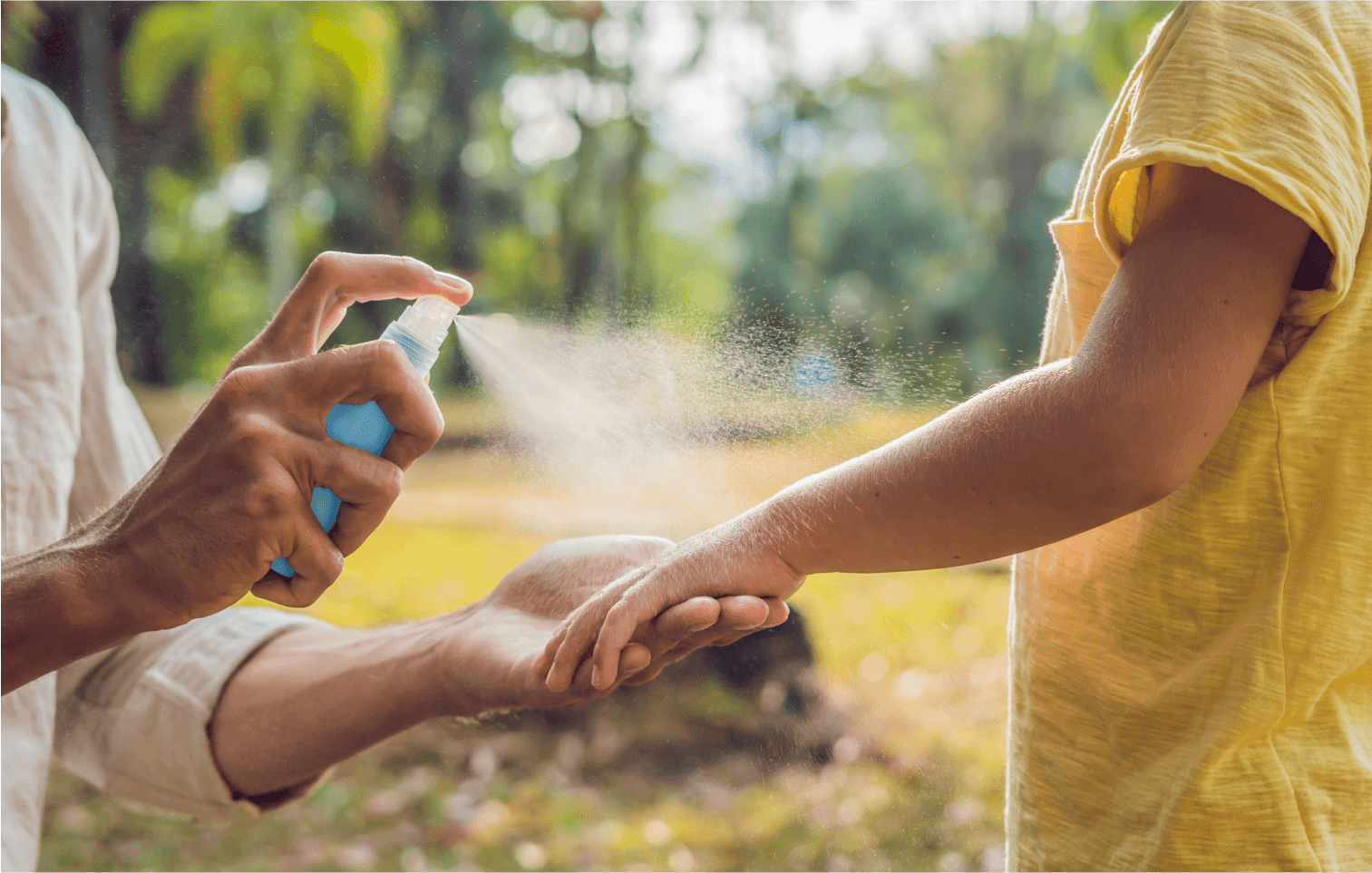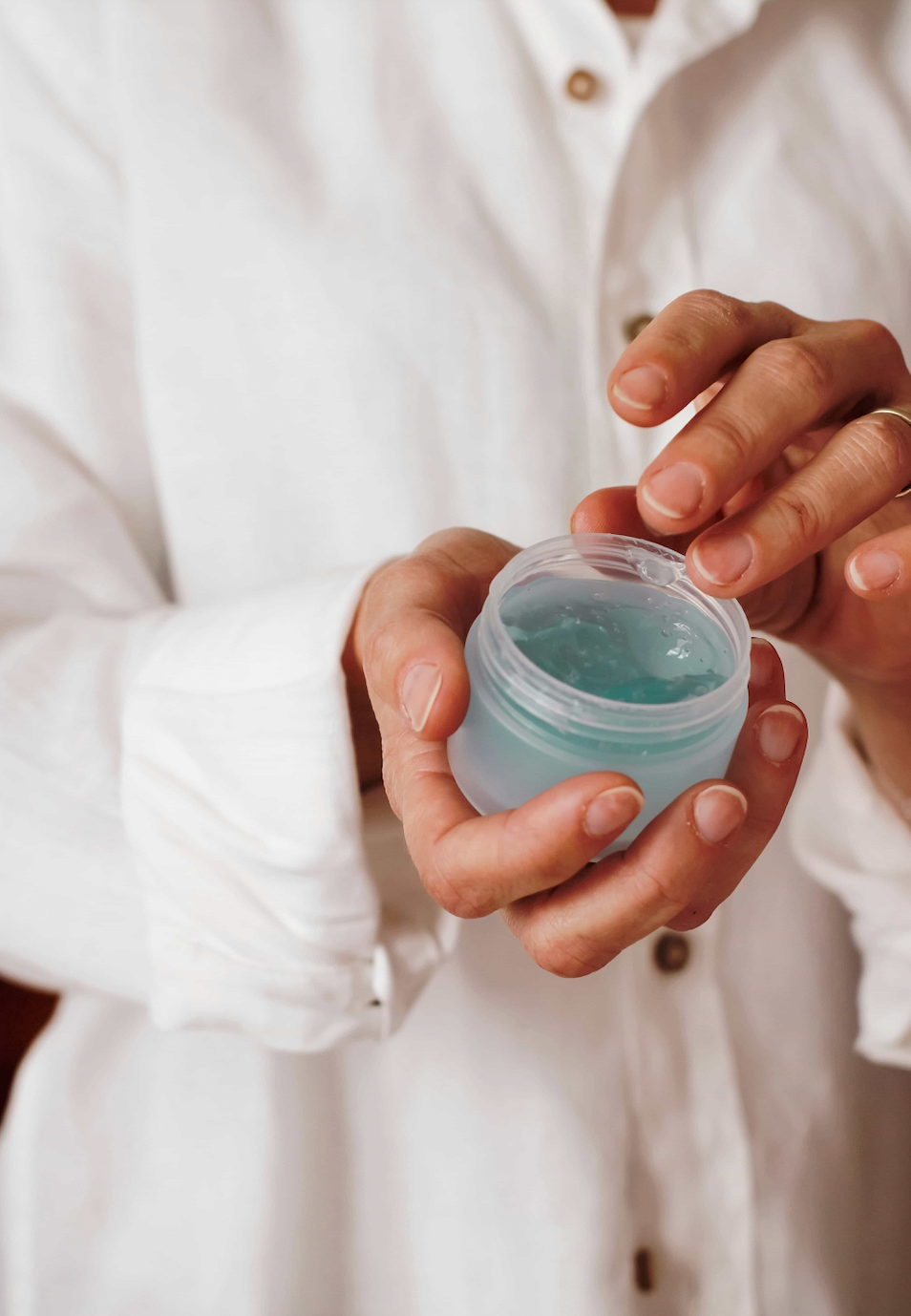What is PVA? Environmental Impact, Use Cases, & More

Have you ever picked up a packet of “sustainable” biodegradable dishwashing or laundry tablets only to discover they were encased in a plastic film?
If this made you think twice about the products’ sustainability, new research suggests your intuition was right on.
This type of film is called PVA or Polyvinyl alcohol.
It’s a synthetic plastic polymer that is supposed to be safe, water-soluble, and biodegradable with a low environmental impact.
This is why it’s used in products bearing biodegradable, sustainability, environmentally friendly, and even “Safer Choice” labels.
However, years of science (and common sense) tell us plastics are not good for the environment or humans, they do not biodegrade (microplastics anyone?), and they contain a variety of trouble-making chemicals.
However, new research suggests it is not as safe as we’ve been led to believe.
In this article, we’re sharing the facts on PVA, including what it’s used in, the environmental implications, and whether it’s really low-toxic to humans and animals.
The Use Cases for PVA
PVA, also known as Polyvinyl Alcohol or PVOH is a popular plastic because of its excellent film-forming properties and use as an adhesive and a binder.
Even though it’s a type of polymer plastic, it’s also marketed as water-soluble, biodegradable, and low-toxicity for humans and the environment.
It’s even been granted “Safer Choice” and “Safer Chemical Ingredient” status by the EPA.
Yet, as eloquently reported by PlasticPollutionCoalition.org, most of the studies deeming PVA environmentally safe, biodegradable, etc., were commissioned by plastic and related industry trade groups, like the American Cleaning Institute, who profit significantly from selling PVA/PVOH products.
More on this to come.
PVA is used in many household and industrial products, including:

- Dishwasher detergent pods
- Laundry detergent pods
- Food packaging
- Laundry detergent sheets
- Medications
- Medical devices
- Textiles
- Contact lenses
- Paper
- Construction supplies
- Fishing gear
- Paints
- Sealants
- Food additives
Is PVA Plastic?
This is a simple question that receives very complicated answers from sustainable cleaning and laundry companies defending their use of PVA in pods and detergent sheets.
Here’s a straight answer (sources [1, 2]): Yes, PVA is a type of plastic.
By definition, plastics are a type of chemical product that uses polymers as their main ingredient.
Yes, there are different types of plastics, but synthetic polymers are foundational to their creation.
In defense of using PVA, many companies claim “it’s a gray area” in terms of it being a plastic or biodegradable (more on this to come), “it’s the best we have to work with right now”, and “this is a lot better than selling laundry detergent in a disposable plastic bottle.”
As a healthy cleaning company, we recognize the perils of sourcing sustainable packaging. Therefore, we concede the last two points are debatable.
However, PVA is, by definition, a plastic, and more and more studies are showing it does not fully break down in the environment.
Environmental Implications Of PVA
We all know we have a microplastic problem, with studies suggesting most of us consume about a credit card’s worth of plastic per week.
We wrote about this in-depth in: 8 Ways To Consume Less Plastic.
So, it would stand to reason that using plastic-wrapped detergent pods, for example, would be contributing to our microplastic crisis.
Perhaps you’ve experienced this yourself with dishwashing or laundry pods when the plastic film doesn’t fully dissolve.
However, since PVA passed the EPA’s standards for a biodegradable product, and there are studies showing it’s low-impact, sustainable, biodegradable, etc., we’re told there’s no need to worry.
Yet, new research from the International Journal of Environmental Research and Public Health shows that up to 75% of PVA remains in our waterways after it’s gone through water treatment plants.
Here’s what appears to be going wrong.
In order for PVA to biodegrade, it requires specific enzymes, microorganisms, and enough time to break down and fully biodegrade..
If our water treatment plants were equipped with these specific enzymes and microorganisms and given a set timing protocol, the claim that PVA is biodegradable would be sound.
However, most wastewater treatment facilities in the United States do not meet this criterion.
This explains why PVA is showing up in our soil and waterways, in breastmilk, and in fish.
There is also a serious lack of data regarding how PVA persists in the environment, and its impacts on humans and animals (although it has been linked to inflammation, and its long-term effects on people and the planet.
Bottom line: Although PVA can be biodegradable under the right conditions, multiple studies have shown it does not typically biodegrade fully.
Many scientists, environmental groups, and experts believe PVA, especially when used in detergent pods, is actively contributing to our microplastic problem.
These groups are actively petitioning the EPA to regulate PVAs, which you can learn more about here.
Examples Of PVA’s Environmental Impact
Although we need more data on how PVA impacts various ecosystems, the research is quite clear on the following:
- Like synthetic surfactants, PVA has the ability to foam when released into waterways. This can inhibit oxygen transfer, causing permanent harm to aquatic life.
- PVA has the potential to adsorb dangerous chemicals or contaminants, such as antibiotics or heavy metals, at high concentrations that concentrate in food chains.
- This impacts aquatic life, but also humans who consume fish and seafood.
- Wastewater treatment plants are known to contain various dangerous contaminants and chemicals, which PVA can absorb while passing through.
- PVA/PVOH production releases potent methanol gas, and butyraldehyde, which are both environmental contaminants.
Given the widespread use of PVA (with up to 650,000 tons of PVA produced annually worldwide), it is concerning that regulatory agencies are not taking steps to collect more data on its short- and long-term environmental effects.
However, we know it’s a plastic that doesn’t appear to biodegrade very well, and we know plastics are a problem.
This, along with the data we’ve just shared, should be enough to inspire us to toss the PVA at home!
Is PVA Toxic To Humans And Animals?
As we just mentioned, we know plastics and plastic chemicals are unhealthy for humans and linked to cancers, reproductive harms, diabetes, endocrine issues, immune insufficiencies, and much more.
We also know plastics are terrible for the environment, causing detrimental harm to various wildlife, especially aquatic life who become trapped in plastic waste and are literally swimming in microplastic pollution.
However, data on the health implications of PVA is severely lacking.
Most studies have been conducted on animals, mostly rats, by the PVA industry.
The limited research conducted on humans, most of which involved topical applications, has shown a link between PVA consumption/exposure and irritation and inflammation.
More unbiased research is needed on what happens to people when they consume PVA through drinking water and food.
However, the aforementioned negative impacts of plastic ingestion and exposure have been proven by numerous studies. [Sources: 1, 2, 3, 4, 5, 6]
Toss the Toxins With Branch Basics And Remove PVA From Your Home

As always, what’s good for us is good for the environment. Therefore, we highly recommend breaking up with PVAs and replacing them with PVA-free alternatives in your home.
Here are 3 simple ways to toss the PVA toxins without breaking a sweat:
- Eat more whole foods to avoid exposure via food packaging.
- Learn more in: What Traditional Foods Can Teach Us About Healthy Eating.
- Ditch your PVA-wrapped dishwashing detergent pods in favor of a microplastic-free human-safe dishwashing powder or tablets, like Branch Basics Dishwashing Tablets.
- Related read: Why Human-Safe Dishwashing Is So Important.
- Swap your laundry pods for natural, human-safe, PVA-free laundry detergent or detergent alternatives, like Branch Basics Laundry Detergent.
If this information resonates with you and you’re concerned about PVAs, we’d also recommend signing the Stop Plastic Laundry Pods and Sheets from Contaminating Our Water petition, sponsored by Blueland, Made Safe, Plastic Pollution Coalition, Beyond Plastics, and 5 Gyres Institute.
The more of us who speak up and cast their vote at the cash register, the more pressure it puts on industry and regulatory agencies to do the right thing.
Categories

Marilee Nelson
Marilee Nelson is an Environmental Toxins expert who has spent nearly 30 years advocating for the chemically-sensitive and chronically-ill. She is a Board Certified Nutritionist, Certified Bau-Biologist and Bau-Biology Inspector and specializes in Food As Medicine. She has helped thousands of families and individuals identify, heal and recover from toxic exposures and is on a mission to revolutionize the way American families view their health.







